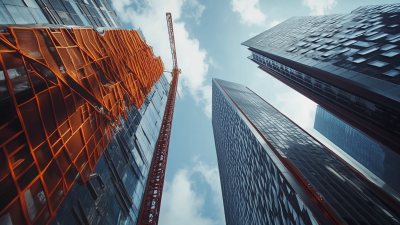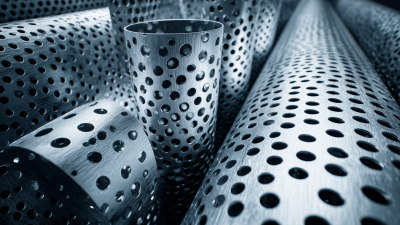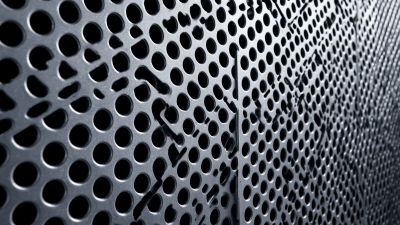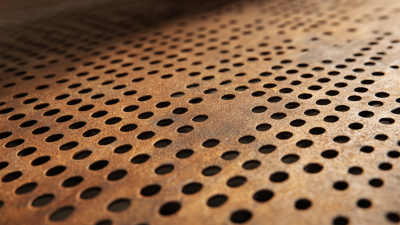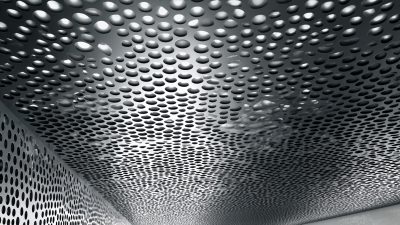In contemporary architecture, the use of
Perforated Metal Screens
has gained significant traction due to their dual benefits of enhancing airflow and aesthetics. According to a report by the
Architectural Institute of America, approximately 25% of architects are increasingly integrating perforated materials in their designs to improve ventilation without compromising visual appeal.
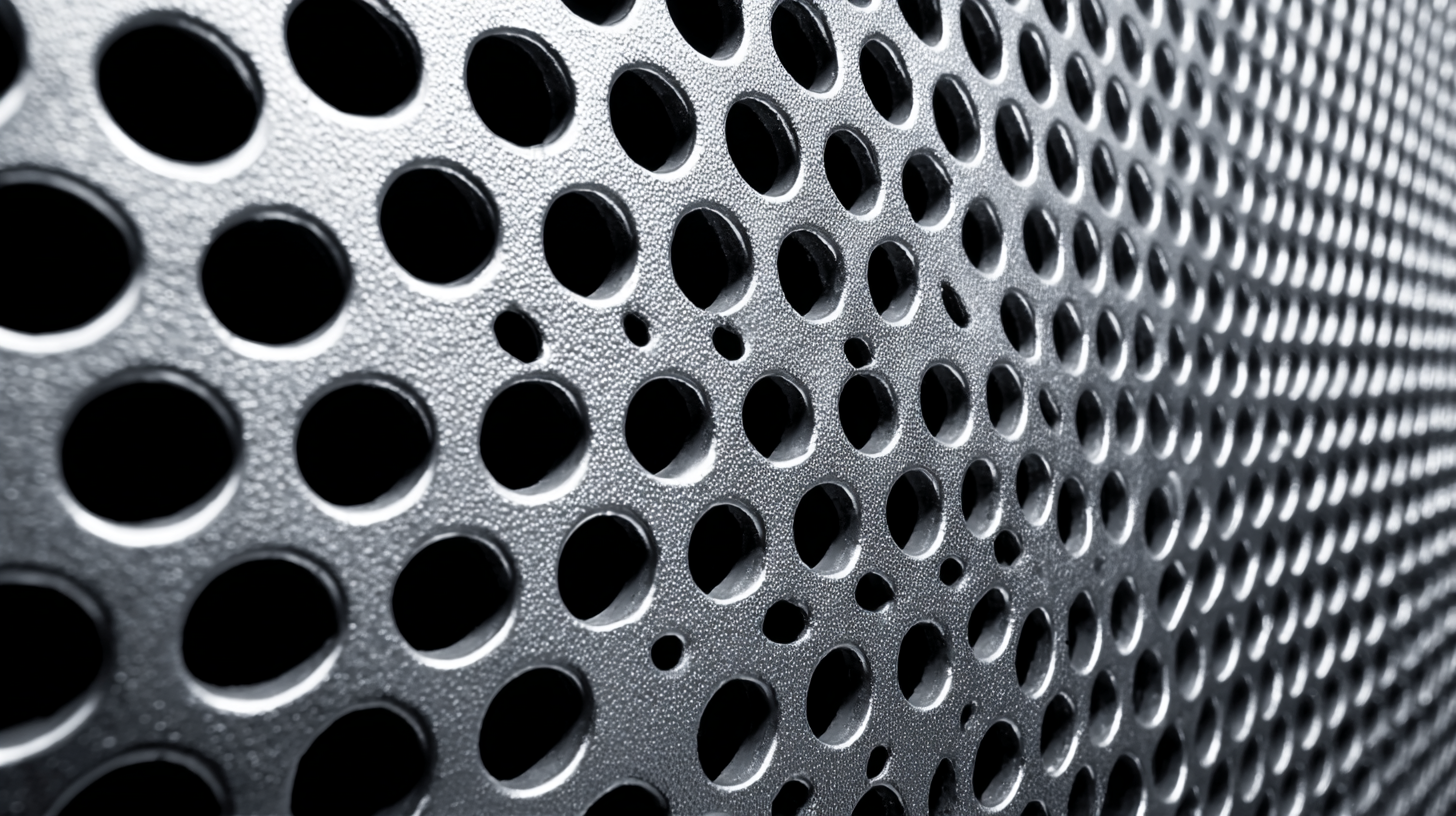 These innovative screens are engineered to provide optimal airflow while simultaneously reducing solar glare, which can lead to energy savings of up to
15% in building cooling costs, as noted in the "Energy Efficiency in Architecture" study by the
U.S. Department of Energy. As urban environments demand more
sustainable and efficient design solutions, the adoption of
Perforated Metal Screens stands out as a key trend that meets both functional and aesthetic needs in modern architecture.
These innovative screens are engineered to provide optimal airflow while simultaneously reducing solar glare, which can lead to energy savings of up to
15% in building cooling costs, as noted in the "Energy Efficiency in Architecture" study by the
U.S. Department of Energy. As urban environments demand more
sustainable and efficient design solutions, the adoption of
Perforated Metal Screens stands out as a key trend that meets both functional and aesthetic needs in modern architecture.
Perforated metal screens have gained popularity in modern architecture due to their versatility and aesthetic appeal. These screens are created by puncturing metal sheets with various patterns of holes, allowing for a harmonious blend of functionality and design. Understanding the different design options available for perforated metal screens can significantly impact both the visual and practical aspects of a building. Patterns can range from simple round holes to intricate geometrical designs, enabling architects to customize screens that fit the overall theme of the structure.
In addition to their aesthetic attributes, perforated metal screens offer practical benefits, particularly in enhancing airflow. By allowing air to pass through while providing shade and privacy, these screens contribute to energy efficiency in buildings. The design options can also include varying hole sizes and arrangements, which can influence the amount of light and air that penetrates the space. As architects explore these options, they can create stunning facades that not only elevate the architectural appeal but also promote sustainability and comfort within the built environment.
Perforated metal screens have emerged as a popular feature in modern architecture, particularly due to their ability to enhance airflow while simultaneously contributing to a building's aesthetic appeal. According to a report by the American Institute of Steel Construction, the strategic use of perforated materials can improve ventilation by up to 30%, allowing for more efficient climate control and reducing reliance on mechanical cooling systems. This is critical in urban environments where air quality is often compromised, as well as in energy-conscious design.
Furthermore, the aesthetic versatility of perforated screens cannot be overstated. A study by the International Journal of Architectural Engineering highlights that the incorporation of these screens not only enhances natural lighting and airflow but also allows for creative expression in architectural design. By manipulating the size, shape, and arrangement of holes, architects can create dynamic facades that respond to their surroundings while optimizing performance. This dual benefit of functionality and design showcases the importance of perforated metal screens in contemporary architectural practices.

Perforated metal screens are increasingly being recognized for their dual functionality in modern architecture, facilitating both airflow and aesthetic enhancement. As urban planners and architects strive to create sustainable and visually appealing buildings, these screens have emerged as a versatile solution. According to a report from Research and Markets, the global market for architectural metal screens is projected to grow by over 5% annually, emphasizing the rising demand for innovative design elements that serve both practical and aesthetic purposes.
When integrating perforated metal screens into a structure, designers must consider the balance between light, shadow, and visuals. Screens can be employed not only to provide privacy but also to create dynamic visual effects that change throughout the day. For instance, a study by the American Institute of Architects highlights that proper use of perforated screens can reduce glare while maintaining natural light, allowing spaces to breathe and feel open.
Tips for integrating perforated screens effectively include selecting patterns that complement the overall design theme of the building and using finishes that resonate with the materials of the surroundings. Additionally, consider varying the screen’s orientation and density to achieve desired levels of transparency and airflow, which can significantly enhance the livability of indoor environments.
When considering perforated metal screens in modern architecture, material selection plays a crucial role in ensuring both durability and visual appeal. Aluminum and stainless steel are the two most prevalent materials used, thanks to their lightweight yet robust properties. According to a report by the Metal Building Manufacturers Association, aluminum's natural resistance to corrosion makes it an ideal choice for outdoor applications, while stainless steel offers a sleek appearance and high strength, making it suitable for high-traffic areas.
Further enhancing their appeal, these materials can be customized using various finishes and coatings. For example, powder-coated aluminum can achieve vibrant colors and textures, adding to the aesthetic value of a building. A study by the American Institute of Steel Construction highlights that the correct material choice can not only improve a building's longevity but also contribute to energy efficiency by promoting better airflow. This aligns with modern architectural trends that prioritize sustainable and visually appealing designs. As reported by the Architectural Record, the use of perforated screens can reduce cooling costs by up to 20% while providing an attractive façade.
| Material | Airflow Efficiency (%) | Durability (Years) | Aesthetic Appeal (1-10) | Cost ($ per sq ft) |
|---|---|---|---|---|
| Aluminum | 85 | 25 | 9 | 10 |
| Steel | 75 | 40 | 7 | 12 |
| Stainless Steel | 80 | 50 | 8 | 15 |
| Corten Steel | 70 | 50 | 9 | 18 |
| Brass | 60 | 20 | 10 | 25 |
Perforated metal screens have become increasingly popular in modern architecture, offering both functional and aesthetic benefits. By allowing air to flow freely while still providing a level of privacy, these screens are ideal for various applications, from facades to interior partitions. They can be customized in size, shape, and pattern, which enhances the building's design while maximizing natural ventilation. This innovative use of material not only improves energy efficiency but also creates a visually appealing environment that engages both occupants and passersby.
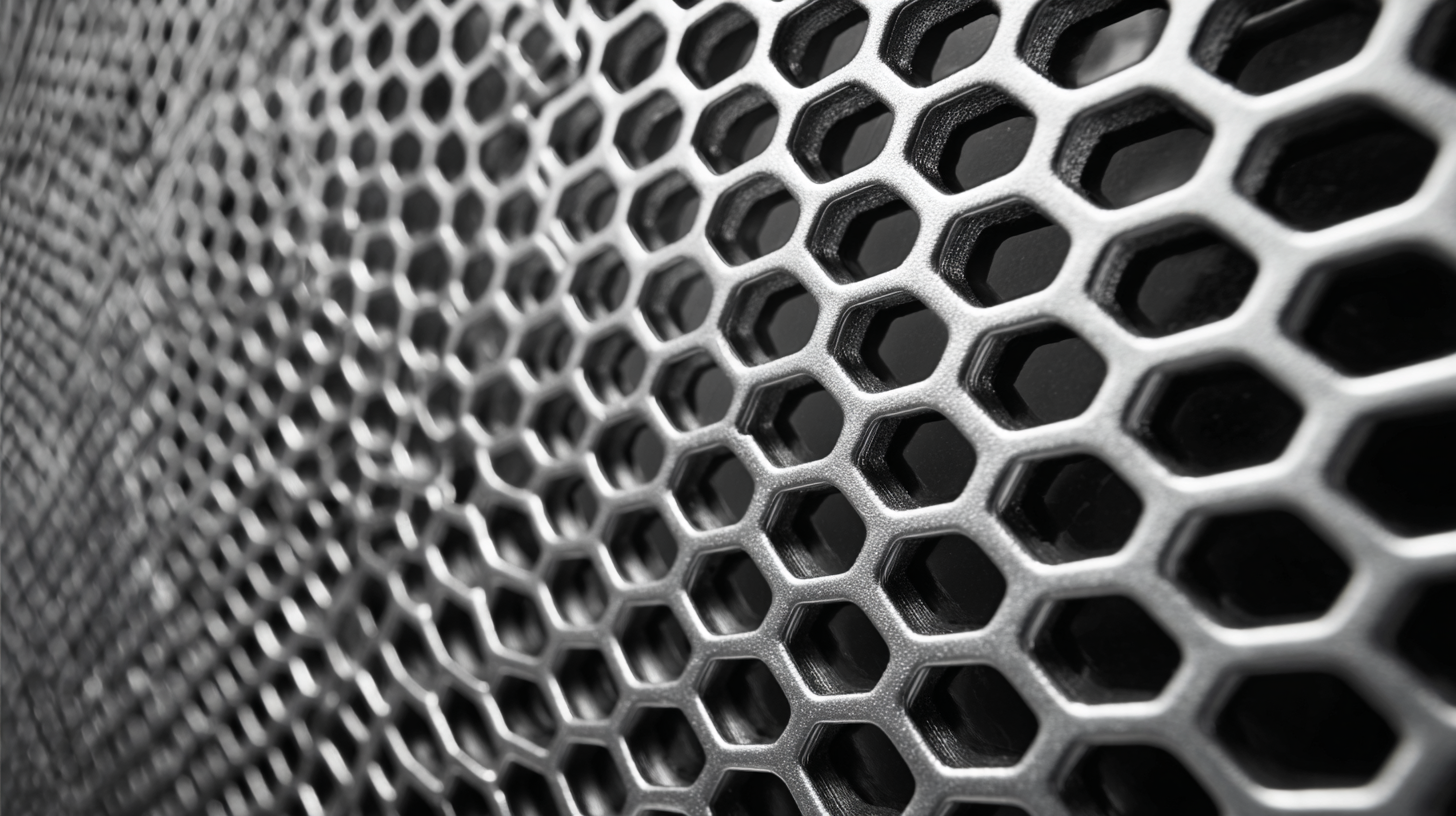
Tips: When considering perforated metal screens for your project, think about the specific patterns that will best complement your design theme. For instance, larger holes can facilitate greater airflow, while intricate designs can add an artistic touch to your space. Additionally, the choice of material and finish can affect durability and maintenance; opting for corrosion-resistant coatings ensures longevity.
These screens serve practical purposes beyond enhancing aesthetics. In urban environments, they can reduce noise pollution, making spaces more comfortable for occupants. They can also be employed in landscaping to create outdoor spaces that blend naturally with the surroundings, providing secluded areas while maintaining an open feel. With their versatility, perforated metal screens are an intelligent choice for transforming both indoor and outdoor environments.
